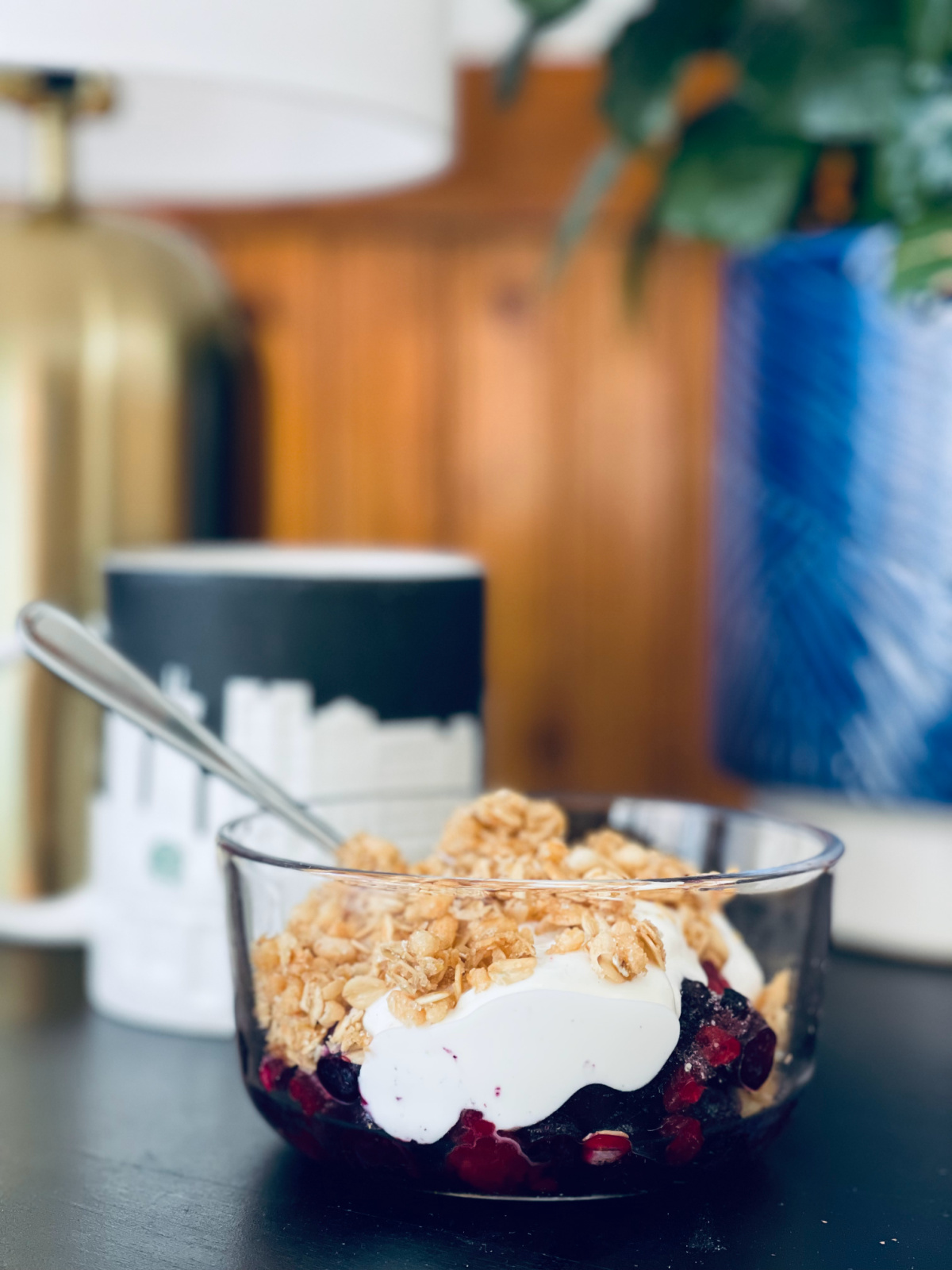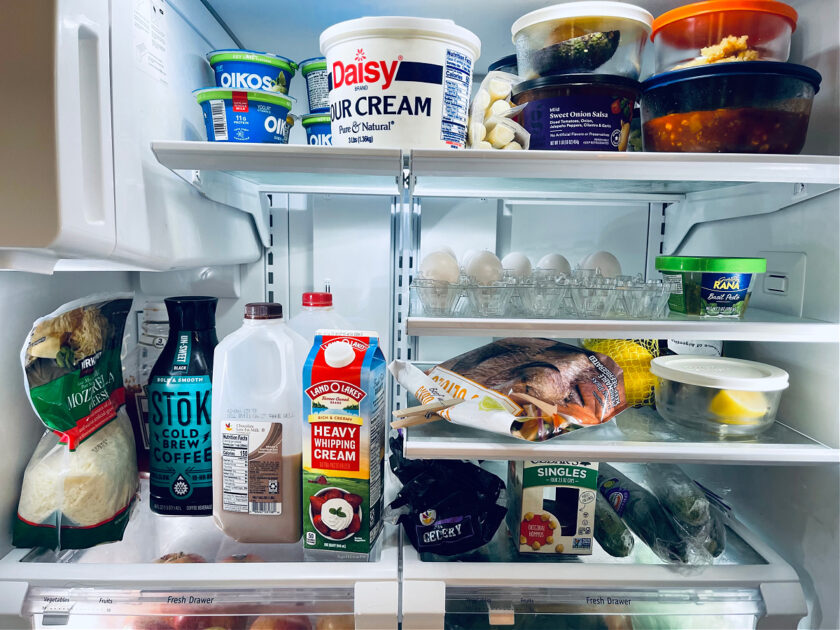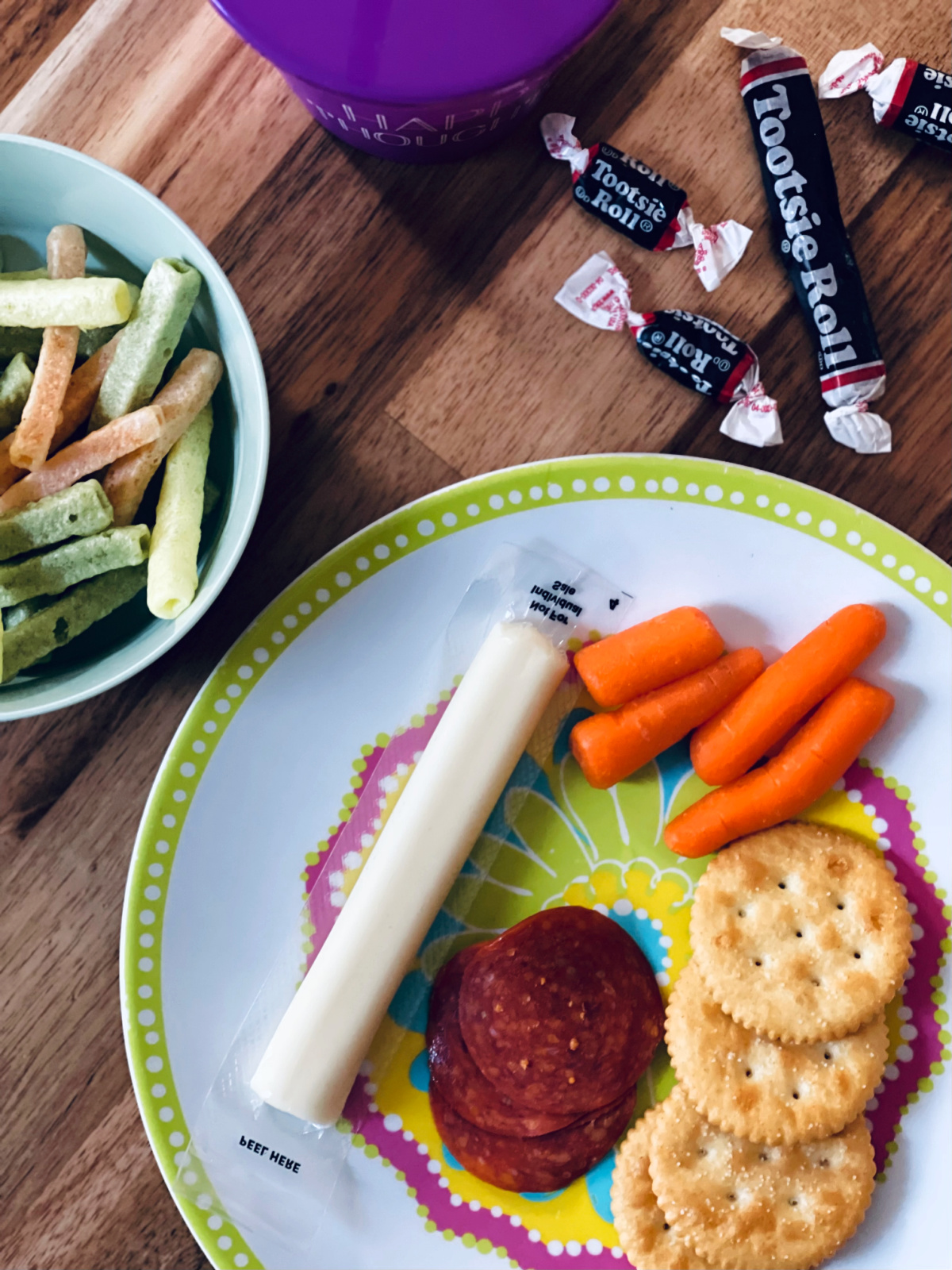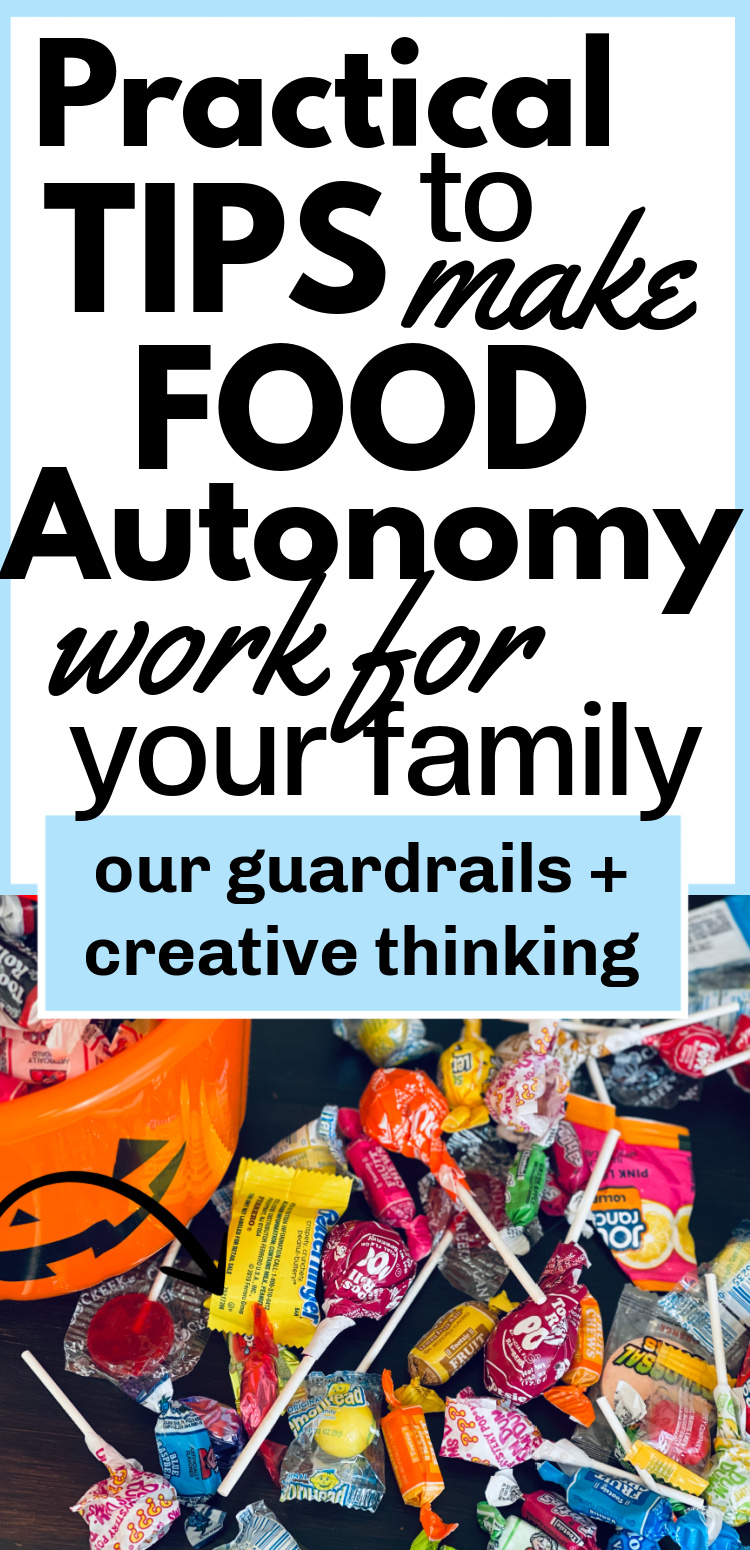Inside: You want to move towards food autonomy for kids, but you have no idea what they would even look like (is it just a big free for all?!). Today, I’m sharing the practicals that make food autonomy work for our family.
Today is Halloween, and the parent wars are alive and well – this time over exactly how to handle the overwhelming amounts of candy flooding into our homes.
Parents are understandably divided. All that candy potentially means increased blood sugar, hyper behavior and God forbid, cavities.
So everyone comes up with their own ways to cope with the holiday.
I’ve heard ideas like…
- Let them as much as you want the first day, then one piece per day
- Three pieces per day over the month of November
- The Switch Witch (Google it – kind of like Elf on the Shelf?)
- Throw away half the candy right off the bat.
But what if instead of limiting how much candy they eat, we brainstormed ways to limit how much comes into the house in the first place? Or how much stays in their buckets?
Many communities have access to 4-5 candy-filled Halloween events. What if we just participated in one or two?
And what if we dumped the candy out at the end of the night and asked our kids to choose the candy they actually like to keep in their bucket? The rest gets put away to share with someone else later on (…or for mom and dad).
This reduces the amount they eat even further.
And what if we left the buckets out the first night, but then we show them the cabinet where their bucket “lives”? They can candy whenever they want, but the bucket “lives” in the cabinet.
After implementing all of these ideas, my 4-year-old hasn’t even asked for her candy since the first day.
It’s these creative ideas and problem-solving that makes food autonomy work.
Don’t Miss Part One in This Series: 5 Really Good Reasons to Give Children Food Autonomy

6 Guardrails That Make Food Autonomy for Kids Work
This post probably contains affiliate links, which means I may earn a commission if you make a purchase through those links. As an Amazon Associate, I earn from qualifying purchases. You can find our full disclosure HERE.
First things first: freedom without connection is dangerous.
Staying connected and keeping the lines of communication open about all things, including food, is my number one priority as a parent.
I also believe it’s the “secret ingredient” that makes things like unschooling and food autonomy and unlimited screen time work.
For us, connection looks like trust, just a few rules (respect ourselves, others and property) and being a safe place for them to make decisions and learn from them throughout childhood.
With that out of the way, here are our general guidelines for food autonomy, our “guardrails”, so to speak.
You Might Also Like: What Is Respectful Parenting? A (Sadly) Radical Philosophy
1. We offer our children A LOT of information about food – the science, the controversy and the privilege.
We talk a lot about what the body needs and how food provides that. We explore books like 100 Things to Know About Food and The Human Body book.
We talk about processed foods versus whole foods, and how ideas about what a “healthy diet” even means have changed over time.
THIS funny video about the ever-evolving guidance around eating eggs is pretty darn funny. It also reinforces the dangers of relying on outside authorities to tell you what to eat and what is healthy and not healthy.
Heck, doctors used to encourage women to NOT breastfeed, and to feed their babies formula because it was “superior”. Yikes!
We also talk about the ingredients in processed foods and their effects, how some ingredients like MSG trick your brain into wanting more and turning off your brain’s typically accurate “I’m full” response.
Lately, we’ve also been discussing how certain food ingredients are banned in Europe, but the same company producing the same foods is allowed to use those ingredients in the U.S.
We also talk about how access to whole foods is harder depending on where you live and how much money you make.
It’s privilege to be able to do things like buy the more expensive, but better tasting apples to make fruit more appealing.
2. We try our best NOT to talk about food in terms of “good” or “bad”.
This is something I’m still working on – old habits die hard, ya know? I’m even trying to move away from describing food as “healthy” and “unhealthy”.
We try to use terms like fruits, vegetables, proteins, carbohydrates, snacks and sweets.
So instead of asking, “Did you have a healthy food yet today?”, I’ll ask, “Did you have a fruit or a vegetable yet today?”
There are no “breakfast foods” v. “snacks” v. “desserts” either. There’s just food.
Bonus: this also sets them up to be far less judgmental of other people’s food choices. You never know what kinds of food people have access to, financially or geographically.
3. We, the parents, still decide on some level what kind and how much of certain foods to bring into the house.
Food consumption often starts with what the parent is choosing to bring into the home and introduce to their kids.
This is our number one “guardrail”, setting natural limits on what comes into the house.
Taking responsibility for your own food intake and purchases isn’t easy, but it’s necessary.
If you aren’t comfortable with what your kids are eating, make slow and steady changes to course correct. Remember: if it’s in the house, they’re probably going to want to eat it.
For instance, I have a penchant for sugary cereal – a habit I’m trying hard to break – that I’ve passed on to my youngest. But I’ve found that if I don’t buy it, she doesn’t miss it.
Or at one point, I was getting candy every week, and it was my middle child that mentioned it wasn’t the best habit. So I stopped.
We happen to live in a rural area where the main grocery stores are 20-25 minutes away. That alone helps a ton with limiting trips to once a week.
My kids will make requests, and I will sometimes say yes. Sometimes I say no, more often based on grocery budget concerns than anything else – we’re not made of snack money, people!
I usually buy a dessert a week – two packages of cookies or 2-3 cartons of ice cream. Any other sweets need to be baked at home, and that alone limits the consumption of sweets.
I do try my best to have at least a few “safe” or preferred foods per family member on hand at all times.
4. We ask/strongly encourage my kids to retain at least one fruit and one vegetable in their daily diet.
I don’t think there is anything wrong with asking your kids to choose a couple whole foods to eat regularly, especially if you’ve laid the groundwork with information about what fruits and vegetables do for your body – vitamins, energy, etc.
If you can afford it, offer a variety of choices to try.
Things like smoothies or parfaits or dips for veggies or fruits can make fresh fruits and vegetables more appealing.
Or, bags of steamed veggies are easy options, too.
If food prep is hard for you (I’m right there with you!), you could try cutting apple slices in advance and putting them in lemon water, or getting pre-cut veggies if that is a viable option financially.
5. We consistently invite them to try different foods and suggest a variety of food options. I am also open to their suggestions of new foods.
The key is the word “invite”. An invitation can be declined or accepted, no strings attached.
And while yes, I control what foods come into the house, I am very open to suggestions. We have lots of time to cook new recipes, if that’s what they want to do.
We’ve tried different food delivery options over the years, usually to break out of a rut.
For whatever reason, those boxes are super appealing to kids! They love to help make the food and will often try it, too.
If we are in the grocery store and ask to try a new food, I usually say yes.
6. I focus most on modeling my own balanced eating.
Have you ever heard the phrase, “More is caught than taught?” That’s a pretty central belief in food autonomy.
My kids see me eating bananas, fruit parfaits, baby carrots and ranch dressing.
They’ve watched me go from a weekly shared Ben & Jerry’s to rarely indulging in ice cream. Then again, they also just watched me eat my fair share of Halloween candy.
They know that I run 3-4 days a week, but they know my main reason for doing so is mental health and physical health, not weight loss.
They’ve also watched their dad go through various cycles of trying to eat differently, too. They know Doritoes are his kryptonite, so we buy them a lot less frequently lately in order to support dad’s version of better eating.
Your kids are watching what you eat and what you do far more than you know. If you want them to make different food choices, focus on yourself first.

More Practical Suggestions for Implementing Food Autonomy and Intuitive Eating for Kids
Sometimes, parents agree with the reasons behind food autonomy, but they are still lost on how exactly to make it work.
If you’re wanting more practical suggestions, and ideas for how to approach food autonomy, here are a few things I do to avoid food preparation burnout and food waste.
1. Reconsider big family dinners/meals with one dish.
Big family meals are infrequent in our home – maybe every 1-2 weeks?
We have a lot of noise sensitivity in our family, and with seven people in the family, family dinners can be quite overwhelming.
Because we’re together all day, most days, we don’t need that daily face time family dinner provides.
We all have different hunger times, so we often will eat separately or in smaller groups. We only have dinner altogether for meals everyone enjoys, like pasta or pizza.
If family dinners/meals are important to you, that’s fine. You can all sit down together, even if everyone is eating something different.
You’ll just need to think through your own boundaries around making different foods.
Speaking of boundaries around food prep…
You Might Also Like: 10 Things I Stopped Doing That Made Me A Happier Mom
2. Set personal boundaries around when you can make food.
This is the major sticking point around food autonomy for a lot of parents. And for good reason!
I certainly don’t want to spend all day making different foods for various kids, one after the other. So I try my best to decide in advance what I can and can’t do: sometimes the answer is no.
For my older kids who can make food for themselves, I definitely ask them to make at least one of their meals each day.
For younger kids, I offer easy foods like cheese sticks, fruit with or without nut butter, individual yogurts, granola bars, sandwiches, bagel pizzas etc.
While we don’t do family dinner, I still make dinner 3-4 days a week for my husband and I, and whatever kids are willing to eat/try it.
I try my best to factor in everyone’s likes and dislikes when choosing dinners and make at least a couple each week that I know kids will eat.
3. Keep a lot of easy, healthy food choices in the house.
If you want to minimize food prep, let me tell you, easy, healthy food is your friend.
We keep a lot of easy foods in the house on a regular basis. Foods like…
- Cheese Sticks
- Granola Bars
- Apples & Bananas
- Baby Carrots & Hummus
- Celery & Raisins
- Deli Turkey and/or Ham
- Individual Yogurts
- Baguettes
- Crackers & Pretzels
- Chicken Nuggets
If you want to keep food prep for multiple kids easy, let them graze throughout the day on easy, but relatively healthy foods.
Everyone’s definition of “healthy” is different, but these mostly qualify for me.
Most of them require no prep, or very little prep. Things like frozen wontons take five minutes to cook, and THIS toaster oven/air fryer gets used every day, all day in our home.
4. Make dessert not a big deal – they can have it first thing, if they want to.
If there is candy in the house or ice cream, and they want to have that first thing in the morning, our kids usually can.
There is no predetermined food order, or dessert after this meal or at this time of day rule.
Again, so much of this is what you, the parent, are bringing into the house, and what you’re making on a regular basis.
So if I only bring two cartons of ice cream into the house or two packages of cookies, once those are gone, they’re gone.
It doesn’t really matter when those get eaten, although we do try to make sure that the sweets distribution is “fair” (#bigfamilyproblems).
Their sweets intake is limited by how much I choose to bring into the house. If I’m concerned about how many sweets they are eating, I buy fewer sweets – it’s that simple.
5. Avoid stressing over unfinished meals by changing portion sizes, not setting meal times and being willing to eat the leftovers yourself.
While my kids are not required to finish foods if they are full, I typically will save it for later if at all possible.
But I do not make them eat the leftovers. Instead, I’m usually the one who eats the leftovers.
For whatever reason, I really struggle with waste. I’m not sure if it’s deeply ingrained frugality or some other childhood experience, but I have a very difficult time throwing food away.
We avoid a lot of waste in other ways by…
- not doing big family dinners,
- making smaller portions (you can always have more), and
- following intuitive, hunger-based eating schedules.
So if you’re worried about waste, I’ve personally found that food autonomy decreases waste, especially if you, the parent, are willing to be flexible about your own food intake.

Every Parent Will Have Different Boundaries Around Food Autonomy, And That’s OK
Different parents will be comfortable with less guardrails, and other parents need a bit more to feel comfortable giving their kids food autonomy.
You can always baby step your way to fewer guardrails and less control over time.
Don’t be too hard on yourself: giving children food autonomy is countercultural.
Even proponents of intuitive eating for kids still put the parents in control of WHEN food is offered. It’s hard for adults to let go of control, or to fathom a world where trusting kids is the the norm.
Ultimately, every family is unique, so food autonomy will look different in every family.
Know yourself, trust your parent gut and make the best choices you can for your unique kids.
(More on the caveats of food autonomy in the final post in this series.)
Do you have suggestions for navigating the practicals of food autonomy for kids? Share in the comments!
Read Next: Considering Not Limiting Screens? 7 Guiding Principles for Parents


